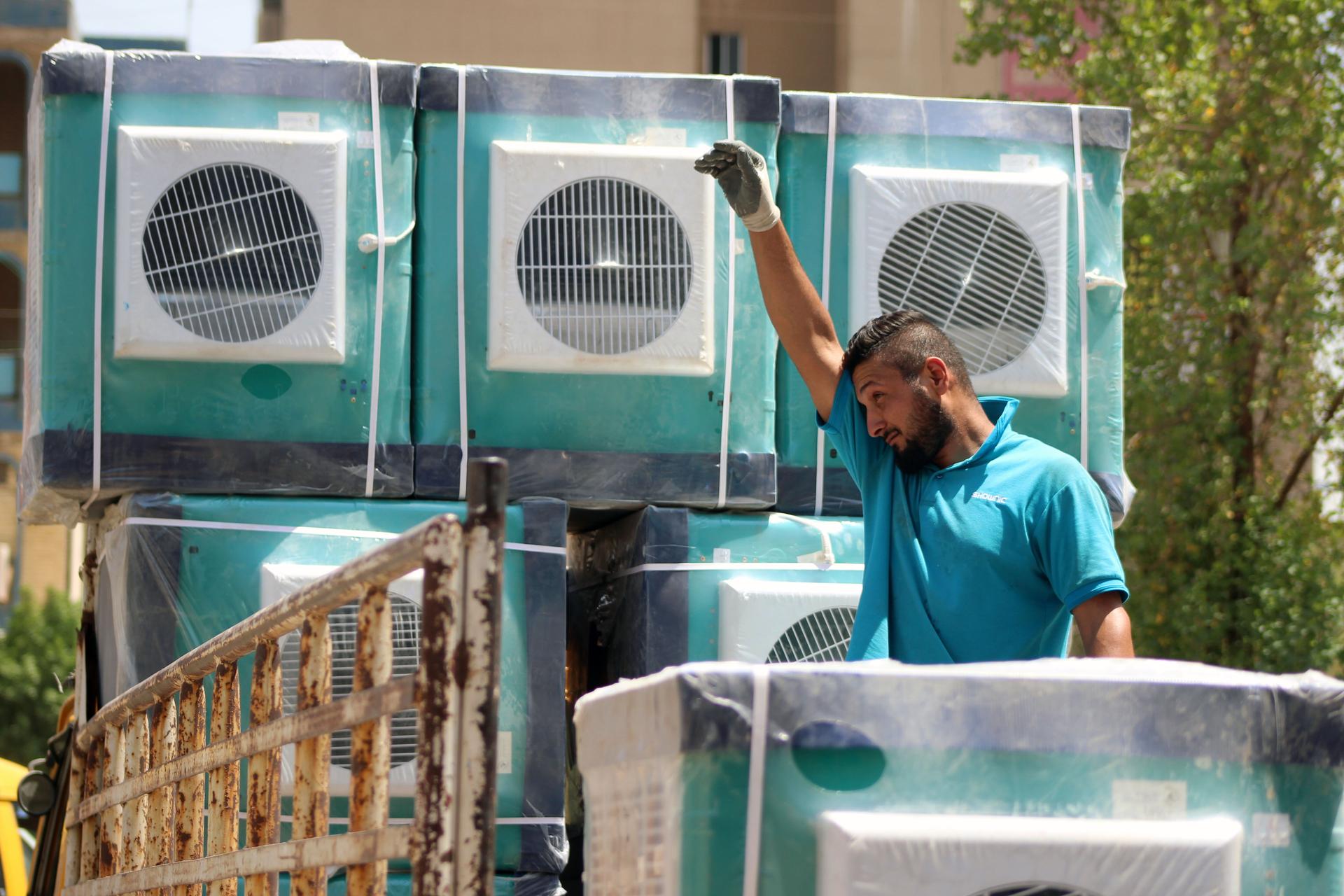Global warming could make Persian Gulf region too hot for human habitation by 2100
An Iraqi man unloads air condition units at a store in the Karada district of Baghdad on August 2, 2015, as temperatures reached to 46 degrees Celsius (115 Fahrenheit).
Global warming could create peaks of humid heat in the Persian Gulf beyond human tolerance by century's end, according to a study published Monday in the journal Nature Climate Change.
If greenhouse gas emissions continue unabated, heat waves occurring on average once every 10 or 20 years would, by 2100, exceed the capacity of a young, healthy person to maintain a normal body temperature, the study found.
Even annual summer heat waves would become dangerous, especially for the elderly and very young, the researchers said.
"The human body regulates its core temperature to around 37 degrees Celsius (98.6 degrees Fahrenheit), and its skin to a cooler 35 C (95 F)," explained co-author Jeremy Pal, a professor at Loyola Marymount University in Los Angeles.
That difference allows us to shed excess heat, especially when the air is muggy.
But if a double whammy of high heat and humidity reaches a certain level, "the body is no longer able to cool itself and begins to overheat," Pal told journalists in a phone conference.
That threshold — measured with an index scientists call "wet-bulb" temperature — would be crossed, for example, if a humidity level of 50% were combined with a temperature of 46 C (115 F).
A slightly higher temperature with a lower humidity level, or vice versa, would have the same effect.
Without air conditioning, humans could last about six hours under such conditions before their bodies began shut down, the authors said.
They pointed out that some outdoor activities — such as the Muslim pilgrimage known as the Hajj could literally become life-threatening due to the climactic conditions.
While the temperatures in Mecca and nearby Jeddah are not predicted to be the highest in the region, they would still pose a risk.
Many industrial activities — transportation, construction, agriculture, aquaculture — would also become hazardous under such conditions, the authors said.
To date, no place on Earth has cross the redline of a deadly "wet-bulb temperature."
But on July 31 of this year, Bandar Mahshahr in Iran came very close, according to Christoph Schar, a scientist at the Institute for Atmospheric and Climate Science at ETH Zurich.
"The consequences of major heat waves for human health has become apparent from the death toll of recent events such as those in Chicago in 1995, Europe in 2003 and Russia in 2010," he wrote in a commentary, also in Nature Climate Change.
In France alone, there were some 15,000 excess deaths in the summer of 2003, according to government figures.
Conditions in the Gulf are ideal for creating the kind of steamy cauldron that could make certain areas there close to unliveable, the researchers found.
Clear blue skies and the absorption of the Sun's radiation by the shallow waters of the Red Sea and Gulf combine with a concentration of water vapor hanging close to Earth's surface, they said.
Under a "business as usual" scenario of greenhouse gas emissions, average global temperatures are predicted to rise by about 4 C (6.4 F) by the end of the century, according the UN's top science panel.
A 4 degree world would be one of extreme drought, deadly superstorms and sea level rise. Human impacts would include mass migration and the spread of disease, scientists say.
mh/pvh
The story you just read is accessible and free to all because thousands of listeners and readers contribute to our nonprofit newsroom. We go deep to bring you the human-centered international reporting that you know you can trust. To do this work and to do it well, we rely on the support of our listeners. If you appreciated our coverage this year, if there was a story that made you pause or a song that moved you, would you consider making a gift to sustain our work through 2024 and beyond?
